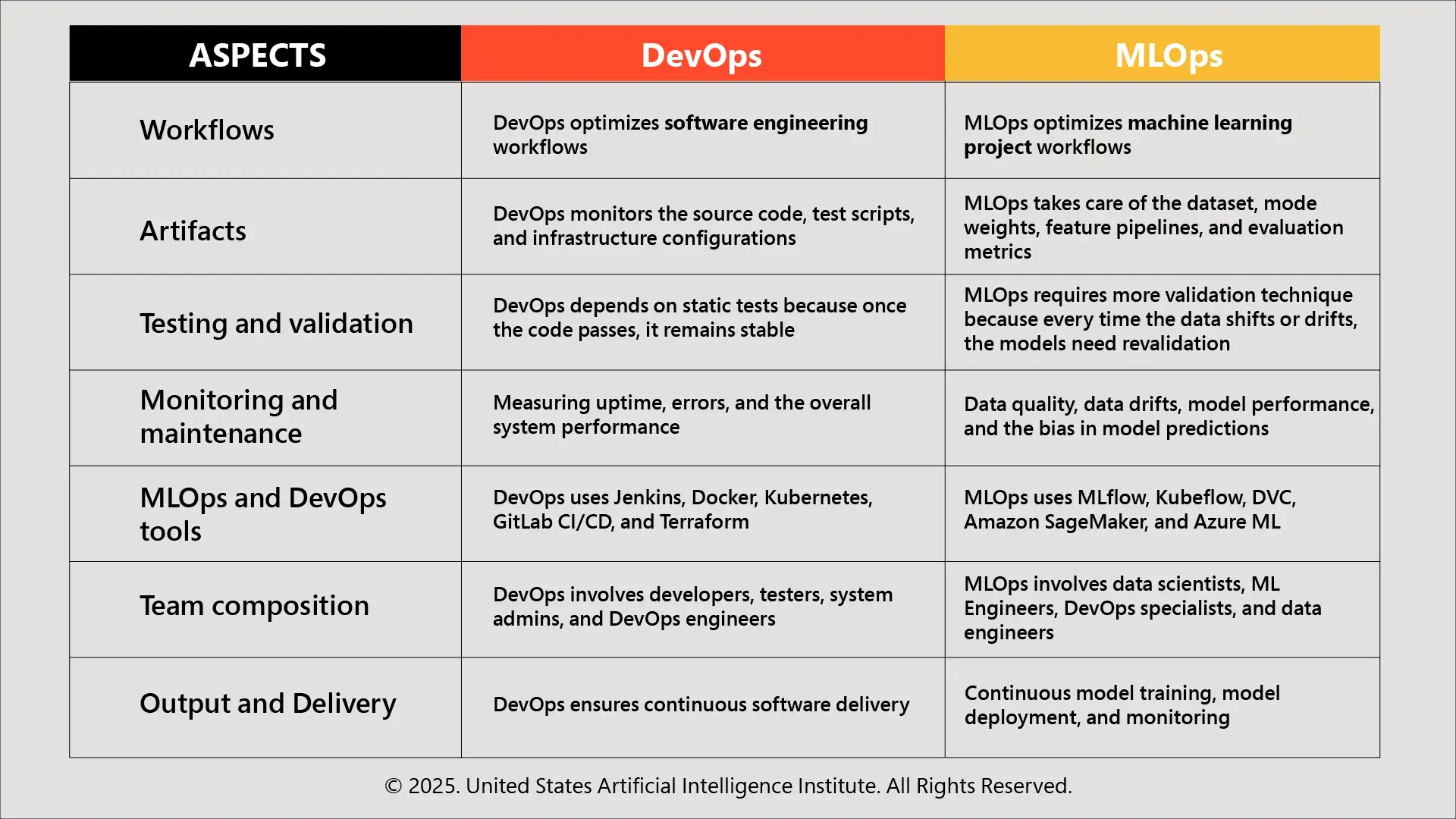
DevOps empowers automation, MLOps empowers intelligence, and LLMOps empowers the rise of large-scale AI: All are powering modern software engineering.
And today, LLMOps takes it even further – allowing organizations to deploy, monitor, and continuously refine large language models that are capable of thinking and responding like humans.
As per Fortune Business Insights' 2026 study, the Asia Pacific region is expected to witness the highest growth rate due to increasing DevOps adoption among SMEs and rapid cloud adoption in the world.
Together, DevOps, MLOps, and LLMOps create an integrated operational ecosystem that connects software engineering, AI development, and intelligent automation in a way that has never been done before. Let’s explore how.
What is DevOps?
DevOps is a culture, methodology, and toolset bringing together software development and IT operations. Its objective is to enable quick processes, minimal faults, and enhanced collaboration of development teams. The developers and support staff are not separated. They simply automate the building, testing, and release process. Did you know that the average salary of a DevOps Engineer in the US is $122,950 /year?
Key characteristics of DevOps:
Now you might be thinking, Why do we need MLOps?
While traditional DevOps pipelines are great for software, they aren’t ideal for ML projects. An ML system includes data collection, model training, deployment, and continuous monitoring. As data drifts, models degrade and require governance and retraining – something you can’t achieve with classical DevOps. This is where MLOps steps in because it has all the features of DevOps and has the ability to manage machine-learning workflows.
7 Phases of DevOps Lifecycle
DevOps is a loop of continuous feedback that encompasses seven stages. They are as follows:
These phases make DevOps the lifeline of software engineering in modern times.
What is MLOps?
MLOps, or Machine Learning Operations, expands DevOps to machine-learning systems. It helps manage data pipelines, experiment tracking, model training, versioning, deployment, and monitoring. MLOps is all of DevOps, but specifically applied to machine learning. The MLOps Engineer's average salary is $87,220 /year in the US. (ZipRecruiter)
Key characteristics of MLOps:
According to the Global Market Insights, the market size of MLOps is projected to grow to USD 39 billion by 2034.
5 Phases of MLOps Lifecycle
The MLOps lifecycle involves the following stages:
All of these phases combine to close the gap between experimentation and actual deployment. This is the foundation of any contemporary machine-learning project.
Are MLOps and DevOps the Same?
Assume that they are all part of the same DNA, such as automation, continuous improvement, and collaboration.
However, they also have some similarities. Let’s explore the similarities between MLOps and DevOps:
While each facilitates more rapid and safer innovation, one does the same for engineering operations, while the other does the same for Machine Learning projects.
Differences Between DevOps and MLOps
These are the major differences between DevOps and MLOps in 2026.

Applications of DevOps and MLOps in 2026
DevOps Applications
MLOps Applications
What Is LLMOps?
LLMOps or Large Language Model Operations frames the operational side of LLMS applications like ChatGPT, Gemini, or Claude. Among others, it deploys, fine-tunes, scales, and monitors foundation models with hallucinations, bias, prompt lengths, and inference costs. Here are LLMops characteristics:
How LLMOps Differs from DevOps and MLOps?
Distinctive aspects of LLMOps:

The Bottom Line
Beyond 2026, the triad of DevOps, MLOps, and LLMOps is what makes intelligent software systems possible. Acquiring these skills in DevOps, MLOps, and LLMOps will help you become successful in the software development career.
If you are confused about which path to follow to gain skills in them, you can check out the Top AI ML Certifications, which are training professionals not only the AI and ML skills but also in how to work with the modern tools, cultural philosophies, and practices such as DevOps.
Follow us: